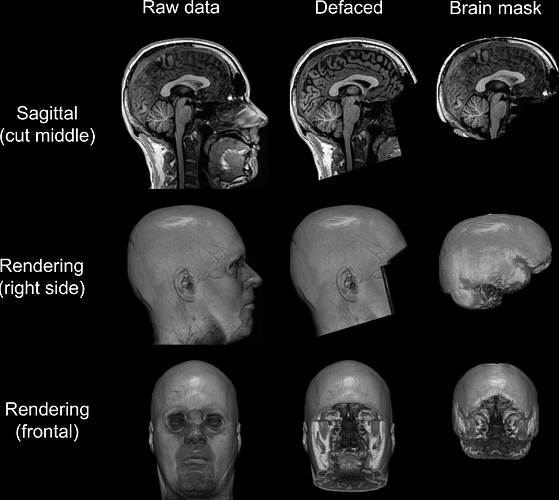Hi everyone,
I’m currently working on a 10-year old fMRI dataset, for which consent form to publicly share wasn’t acquired. Just to share it with other researchers up on request. Nonetheless, I’ve contacted the local ethics committee to ask if the data could be shared if it was fully anonymized.
I’ve added this lovely picture of my MRI resting-face, with two possible defacing approach. Once using, pydeface and once applying a many times inflated brain mask.
The great news is, that the ethics committee allowed me to share my fMRI datasets on OpenNeuro, if I fully anonymize and deface the data. Additionally, they also asked me to remove the ears, as “there are large databases of ear shapes which could lead to identification”.
I hope that this might inspire other people to also contact their ethics committee, to see what can be done.
Now to my questions:
First, using a many times inflated brain mask to “deface” MRI images (see right column in figure), seems to do a better job in anonymizing the data than just defacing it (i.e. we can still see the ears). What are the main reason against such an approach?
Second, I intend to contact colleagues in the region and try to convince them to also contact the ethics committee, to see if they can publicly share their data as well. What are the bests incentives to convince them? Leaving the obvious “data sharing is good - locking it up is evil” aside.
In other words, is there a way to get an additional publication out of sharing the dataset on OpenNeuro? Is this still possible if the associated paper was already published?
cheers,
Michael
